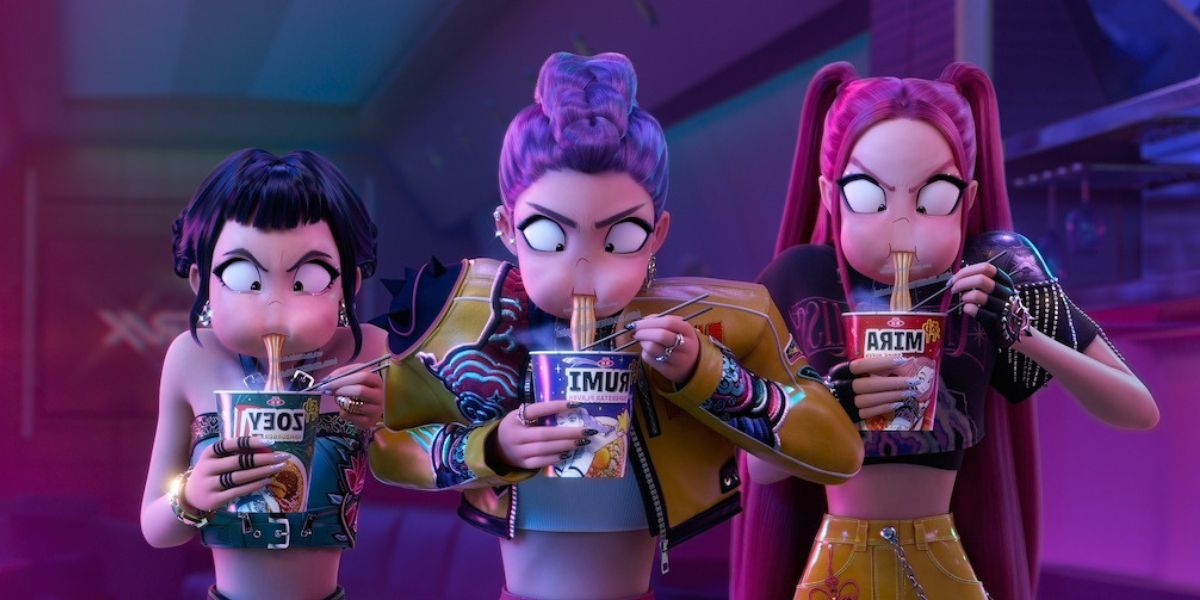In a summer dominated by sequels and familiar franchises, K-pop Demon Hunters has emerged as a true original. This dazzling animated action-musical has taken Netflix and the world by storm. Released globally on June 20, 2025, the film quickly rose to No. 1 on Netflix’s movie charts in 41 countries, including major markets such as South Korea, the United States, Taiwan, and Portugal, according to FlixPatrol analytics. Its meteoric rise is a testament to the film’s unique blend of K-pop spectacle, supernatural adventure, and heartfelt storytelling.
A Story Where Pop Idols Battle Demons
At the heart of K-pop Demon Hunters is Huntrix, a fictional K-pop girl group made up of Rumi, Mira, and Joy, who lead double lives as demon hunters when they’re not dazzling fans on stage. The film’s plot is a high-energy fusion of musical performance and fantasy, as the trio uses their singing voices to maintain a magical barrier—known as the Honmoon—that protects humanity from the demon king Gwi-Ma and his minions. The stakes are raised when a rival boy band, the Saja Boys, is revealed to be a front for demons intent on draining the energy of their fans and breaking the barrier for good.

A Star-Studded Cast and Authentic K-pop Sound
The film’s global appeal is boosted by a star-studded voice cast, including Lee Byung-hun as the villainous Gwi-Ma and Ahn Hyo-seop as Jinu, the conflicted demon-turned-idol. The leading trio is voiced by Arden Cho, May Hong, and Ji-young Yoo, whose performances bring both humor and heart to their roles. The soundtrack, featuring original songs performed by TWICE members Jeongyeon, Jihyo, and Chaeyoung, as well as other K-pop talents, has been praised as “fire” by fans and critics alike.
Visuals, Culture, and Direction

Directed by Maggie Kang and Chris Appelhans and animated by Sony Pictures Imageworks, K-pop Demon Hunters is a visual feast. The film’s style draws from the glitz of K-pop concerts, the drama of Korean folklore, and the kinetic energy of anime. Director Maggie Kang, herself born in Seoul and raised in Toronto, infused the film with authentic Korean cultural elements—from landmarks like Namsan Seoul Tower to traditional hanok houses and mythic grim reapers. The result is a film that feels both globally accessible and deeply rooted in its heritage.
Critical and Fan Reception
The response has been overwhelmingly positive. On Rotten Tomatoes, the film boasts a 96% critic score, with reviewers praising its “charming, funny and artfully punchy” universe and its ability to blend humor, action, and music without losing sight of real emotional stakes. Fans on social media have called it “an absolute blast,” “stylish, action-packed,” and “a strong tribute to K-pop and Korean culture in every frame”. Even with some minor third-act issues, the consensus is clear: K-pop Demon Hunters is a new favorite for animation and K-pop fans alike.
A New Standard for Animated Originals
The runaway success of K-pop Demon Hunters signals a growing appetite for fresh, culturally rich stories in the animation genre. By topping Netflix charts in 41 countries and captivating audiences worldwide, the film has set a new benchmark for what original animated features can achieve in the streaming era. With its blend of music, mythology, and modern pop culture, K-pop Demon Hunters is not just a hit—it’s a phenomenon.
